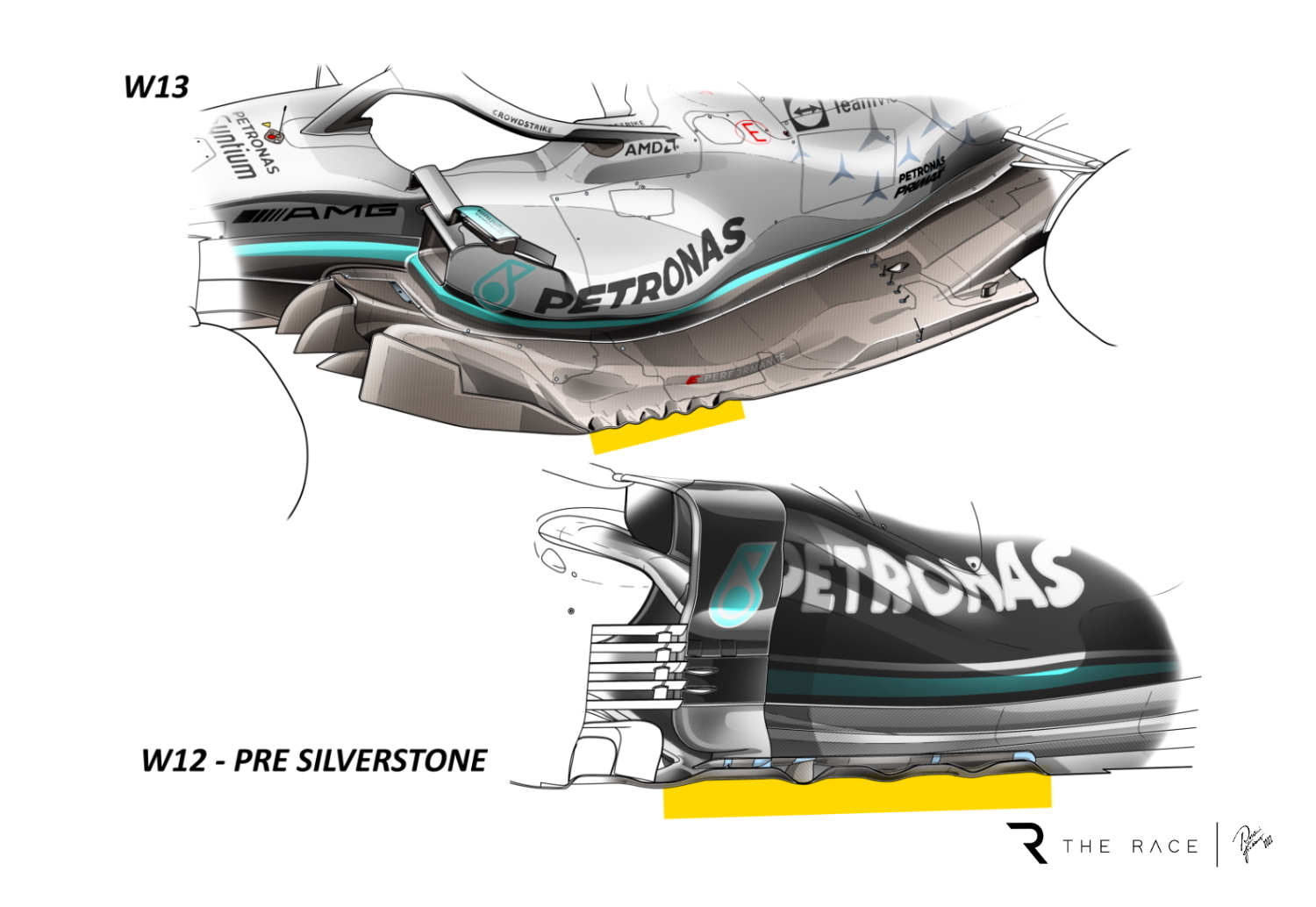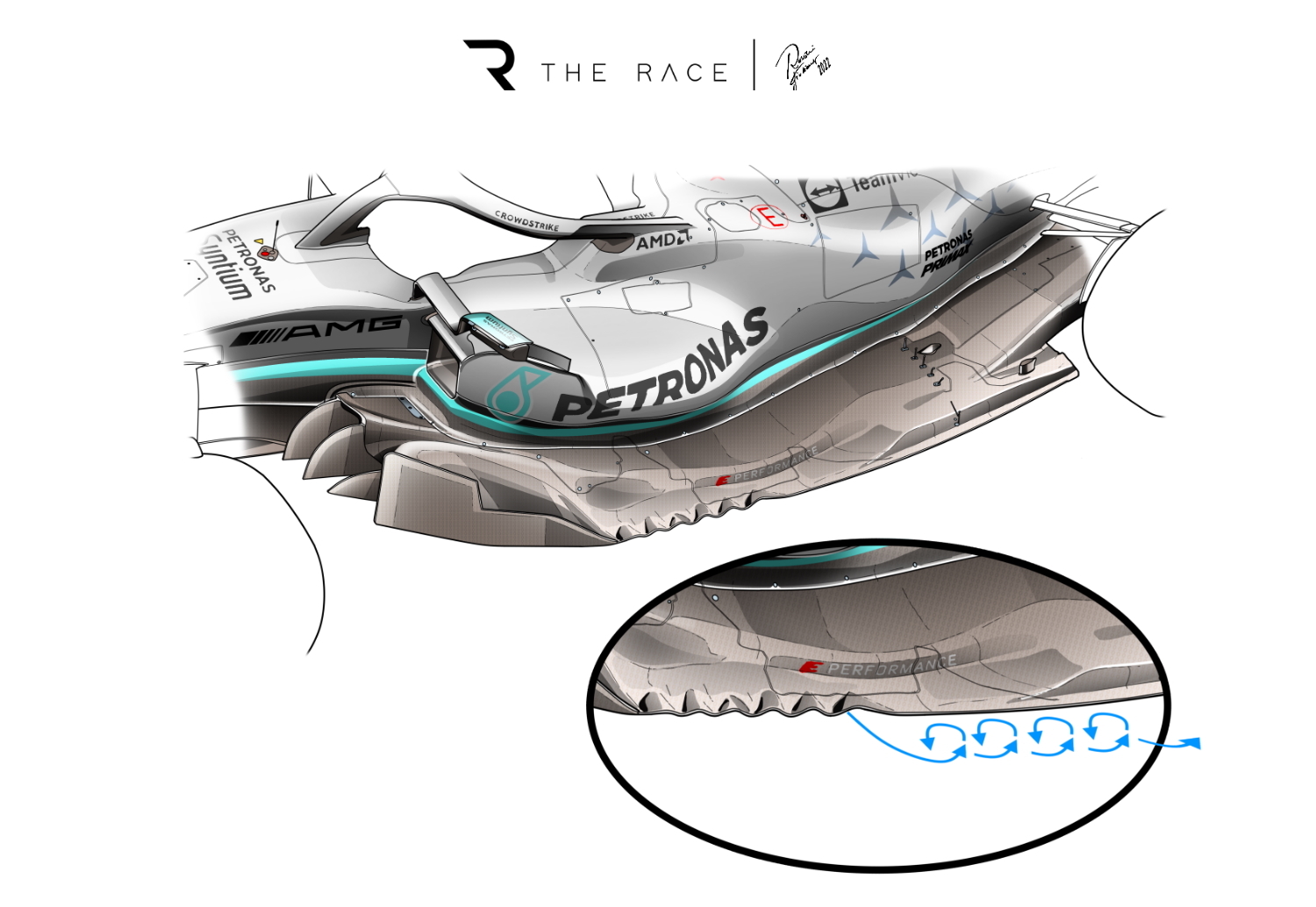Up Next

Illustrations by Rosario Giuliana
Formula 1 has all-new rules this year, but Mercedes has brought back the rippled design it used on the front corner of the floor during the first half of 2021.
The 2022 version is actually more similar to the version used by Aston Martin last year, which had more of these small exit tunnels than Mercedes.

But the fact this idea has been used on both this year and last year’s Mercedes shows that despite the dramatic rule changes, the philosophy and flow structure over the car is not so different.
The splitter/turning vane set-up that you have on the leading edge of the underfloor will direct some of the wider airflow around the front corner of the sidepod. Last year this was accomplished with the very powerful bargeboards.

Together with that airflow coming around the corner of the sidepod, these small exits scavenge some of that flow out from underneath the front corner of the floor.
If you can set up a high pressure, which the raised floor leading edge does, inside the underfloor and a low pressure by turning the airflow around the the outside of the front corner of the sidepod, it will scavenge airflow through these small tunnels.
The intention then is that this sets up a group of vortices. Looking from the front of the car on the side in our illustration, these rotate anti-clockwise.

These then build as they connect up with each other. It then flows down the edge of the floor further rearward, reducing the amount of airflow being pulled under the car because of the diffuser generating low pressure underneath the floor area.
For the previous generation of rules, sealing the underfloor in this way was crucial but you had the very powerful bargeboards to achieve this. With F1 returning to ground effect cars this year it’s now even more important but you don’t have those bargeboards to do it.
This is the theory, but does it work in practice?
Most teams are trying to create this effect to some degree. The norm is to use a turn-up floor edge section in the same area where Mercedes has its series of small tunnels. Red Bull, for example, has what I would call a fairly powerful turned-up section in this area but it’s a simple long section.
I’m sure you can work both versions in a similar way, but my concern is that the more refined you make this type of system the greater the chance there is of it falling over because of the turbulent airflow – or even when steering lock is applied mid-corner.
If you have perfect airflow, it is fairly easy to set up vortices but if the flow is turbulent it gets inconsistent – which is not what you want.
The buzzword is ‘bursting’ the vortex. It is more about flow direction. In an ideal world it is coming from one direction so it is about managing it. With turbulence, it is coming from all directions so very difficult to manage.
As an example, we always hear drivers complaining about cross winds creating problems. The reason for that is that it is ‘bursting their vortices’, or in some case even bursting their bubbles.
The floor is going to be a major area of development in 2022, just as it was last year. But under the new rules, given the massive reduction in the aero detail in the bargeboard area, the floor itself is now even more crucial.




